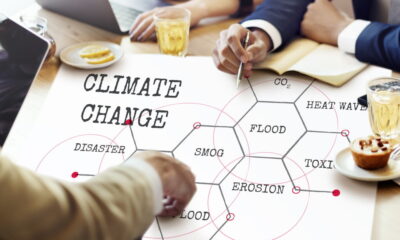

Environment
Food Allergies, Asthma, and the Environment
It’s not just your imagination – food allergies and asthma incident rates are on the rise. In fact, they’ve been increasing for more than a decade. While there are many possible culprits, it’s becoming increasingly clear that the environment – and how we care for the environment – is having a major impact on our health.
The Rise of Food Allergies
“The latest surveys show that the rates of allergy are increasing throughout the world, affecting up to 30-35% of people at some stage in their lives,” Allergy UK explains. “This increase was initially seen in countries such as the UK, Europe and USA, but can now be found in all countries undergoing industrial development.”
There are a variety of opinions regarding why allergies, and food allergies in particular, are on the rise.
Here are a few of them:
1. Dietary Changes
It’s no secret that our diets have changed over the years. We’ve transitioned from primarily fresh diets to diets with more processed foods. Some believe that our increase in food allergies is related to our increased presence of allergenic food items, like peanuts, in our diets. However, there isn’t enough evidence to prove this theory.
A better theory is that we’re not getting enough of the nutrients we need – or are consuming the wrong ones altogether. As Allergy UK notes, “A number of research teams are investigating whether reduced levels of nutrients – in particular vitamin D, omega-3 fatty acids (in fish) or antioxidants – might contribute to the development of allergy.”
As for the growing number of lactose intolerant people, there may actually be a misconception about this condition. While millions of people say they suffer from lactose intolerance, only a very small fraction actually does. The rest may have an intolerance to the A1 protein in cows. Switching to milk from cows with only A2 protein can make a major difference.
2. Hygiene Hypothesis
A second theory is that our environments have become so clean and sanitary that we aren’t exposed to as much bacteria, germs, and micro-organisms as we were in the past. Frequent hand washing and the use of other sanitizers actually weaken our immune systems. So, when we do come into contact with these microbial agents, we’re more likely to develop an allergic tendency.
3. Increased Exposure
Finally, there’s another branch of research that believes our present environment exposes us to a number of ingredients that are derived from nuts at a very young age. These ingredients are found in cosmetic products, lotions, and creams. When applied to the skin, some believe these items can cause the development of an allergy.
Increasing Asthma Rates
It’s also important to discuss the rise in asthma rates, which have really increased over the past decade. “Allergy and asthma result from a complex interplay between an individual’s genetics and the environment,” asthma expert Marc Riedl explains. “In much of the world, the environment in which humans live and develop has changed rather rapidly and profoundly since the industrial revolution.”
Some of the potential interplays between asthma and our environment include air pollution in highly congested cities, the hygiene hypothesis, increased rate of C-section births, and the presence of smoking.
“If we want to reduce the national or global prevalence of asthma, we likely need to tackle large public health issues such as air pollution levels, obesity rates, and perhaps the overuse of antibiotics,” Riedl says.
Where Do We Go From Here?
The increase of food allergies and asthma is certainly something that needs to be discussed in tandem with environmental changes and global conditions. While it’s virtually impossible to eradicate these issues, the more we know, the better our future generations will be.






























